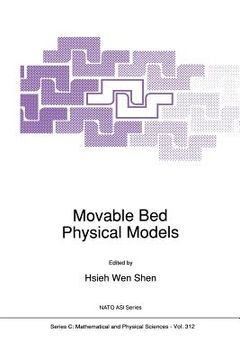Share
Movable Bed Physical Models
Hsieh Wen Shen
(Author)
·
Springer
· Paperback
Movable Bed Physical Models - Hsieh Wen Shen
Choose the list to add your product or create one New List
✓ Product added successfully to the Wishlist.
Go to My Wishlists
Origin: U.S.A.
(Import costs included in the price)
It will be shipped from our warehouse between
Monday, July 29 and
Wednesday, August 14.
You will receive it anywhere in United Kingdom between 1 and 3 business days after shipment.
Synopsis "Movable Bed Physical Models"
For centuries, physical models have been used to investigate complex hydraulic problems. Leonardo da Vinci (1452-1519) stated, "I will treat of such a subject. But first of all, 1 shall make a few experiments and then demonstrate why bodies are forced to act in this matter. " Even with the current advancements of mathematical numerical models, certain complex three-dimensional flow phenomena must still rely on physical model studies. Mathematical models cannot provide adequate solutions if physical processes involved are not completely known. Physical models are particularly attractive to investigate phenomena-involved sediment movements because many three-dimensional sediment processes are still unclear at this stage. Theoretically, there are numerous factors governing movable bed processes and it is nearly impossible to design model studies to obey all the model criteria. Sometimes, appropriate lightweight materials are difficult or too costly to obtain. Often, distorted models are used due to the limitation of available space and the requirement for greater vertical flow depth to investigate vertical differences of various parameters. The turbulence level in the model may also be maintained at a sufficient level to reproduce a similar flow pattern in the prototype. Frequently, engineers are forced to employ distorted models that cannot be designed to satisfy all governing criteria correctly. Thus each hydraulic laboratory has developed its own rules for model testing and a great deal of experience is needed to interpret model results.
- 0% (0)
- 0% (0)
- 0% (0)
- 0% (0)
- 0% (0)
All books in our catalog are Original.
The book is written in English.
The binding of this edition is Paperback.
✓ Producto agregado correctamente al carro, Ir a Pagar.

